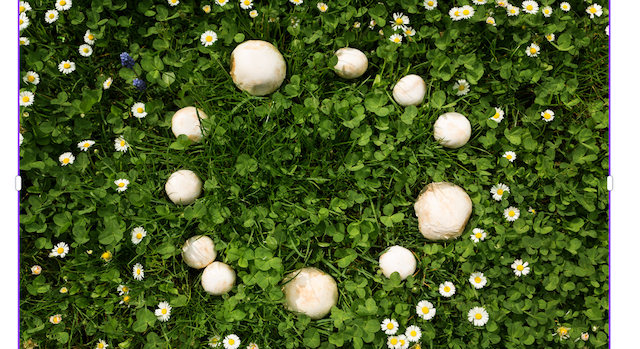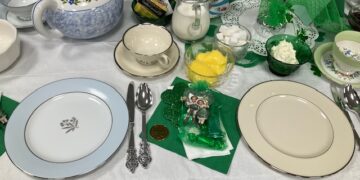Summer is just around the corner, and while it is prime time to get those veggies in the ground, I thought it would be fun to write about another visitor that often graces the presence of yards and gardens alike: the fairy ring.
While whimsical in name, fairy ring mushrooms are a group of fungi that feed and reproduce from one point of concentrated organic matter and expand outward in a circle as they seek more nutrients in the soil. The mushrooms you see are the fruiting bodies of the organism, while the mycelium underneath is the main structure. There are roughly 100 species of fungus that create free circles, which are the ones you often find on your lawn, in your garden, or in a field. They exist on their own and do not depend on any other organisms to survive. The oldest known free circle fairy ring is located in France and is believed to be over 700 years old, and is about 2,000 feet in diameter!
There are an additional number of species that form tethered rings and have a symbiotic relationship with the trees they grow around. The mushrooms depend on the tree for its sugars that are manufactured via photosynthesis, and the tree in turn, depends on the mushroom to help provide it with water and nutrients to grow. These circles are often more difficult to spot unless you frequent the forest, but they are equally magical to view.

While learning facts about fairy rings is fascinating, and we are only scratching the surface of fungus and their behaviors, the folklore surrounding these mystical circles is interesting too. There are several other names for these phenomena including: elf circle, pixie ring, and witches circles. In Germany, it is traditionally believed that these “hexenringe” were where witches gathered, and ill luck would fall on anyone who dared go near them. The Dutch suggested that the circles were places where the Devil left his milk to churn. Native American tribes attribute the rings to the footprints of dancing bison–with large rings being for adults and small rings for baby bison. Of course, there is also the traditional English/Scottish/Irish/Welsh belief that stepping into a fairy ring will whisk you off to Fairyland, where you will be made to dance until you die from exhaustion or until the fairies get tired of your moves. In other parts of Europe, entering a fairy circle would mean you would lose an eye. Regardless of what superstition you believe, proceed with caution should you ever encounter a ring in the wild–you may never know where you will wind up!
Should the whimsy be interrupted by the necessity to rid yourself of a fairy ring at your home, there are a few suggested methods to use. While these rings can temporarily kill the grass surrounding them, they do actually leave behind nutrient-rich grass in their wake, which can also cause the area in which they form to have a lush green circle in the middle. They actually may be an indication that your lawn is dry and in need of nutrients and some maintenance. Proper watering and irrigation will prevent these rings from forming and provide you with a healthy patch of grass instead. You can remove the mushrooms themselves by mowing over them, but just realize that they will only reappear.
The next time you find yourself out and about and in the presence of a fairy ring, hopefully, you will appreciate its unique beauty. Just be cautious about whether or not you step inside it–and if you do, make sure you are wearing your dancing shoes!
































